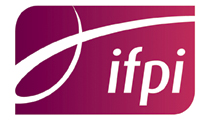This website uses cookies so that we can provide you with the best user experience possible. Cookie information is stored in your browser and performs functions such as recognising you when you return to our website and helping our team to understand which sections of the website you find most interesting and useful.
Business News Labels & Publishers
IFPI tackles artist payments in annual stats report
By Chris Cooke | Published on Thursday 16 April 2015

Staying with artist royalties, and following on from our reports yesterday on the latest set of stats from the International Federation Of The Phonographic Industry – including the top level stats and the trade group’s call for a review on copyright law’s ‘safe harbours – it is also worth noting another section in the global record industry’s annual report. In amongst the talk of booming streaming income but flat revenues overall, the IFPI included a section on what share of the record industry’s monies are paid to artists.
This was presumably in response to increasingly noisy chatter in the artist community about the way digital income is split between different stakeholders, with many believing that labels should be paying a bigger cut of the money to artists in the digital domain, where the record companies’ costs and risk are arguably less than with CD sales.
The labels – and especially the majors – have rarely gone on the record on this debate, but the IFPI says that it has reviewed a stack of figures and reckons that relatively speaking artists are already seeing a bigger cut of recorded music revenues today than in the peak of the CD era, in that artist pay-outs have declined slower than overall industry revenues.
Or in the words of the IFPI: “In order to better inform this discussion, we conducted research in 2014 to obtain an accurate picture of how royalty payments have changed as the market has shifted from physical sales to digital channels”.
“Industry data compiled by IFPI from the three major companies – covering local sales for locally signed artists in eighteen major markets outside Japan and the US in the five year period to 2014 – shows that while sales revenue fell 17%, total artist payments – in the form of royalties and unrecouped advances – declined much less in real terms (down 6%) and increased significantly as a share of sales revenue, by 13%”.
The trade group concludes: “Over the five year period, the data shows that total payments by record companies to local artists totalled more than $1.5 billion across the eighteen markets”.
Although it’s interesting to see the IFPI even responding to this debate in its annual report, it seems unlikely the artist community will be convinced by that statement, not least because of the constraints employed in the trade group’s stats review. And, given that statement relates to major labels only, many in the indie label community – especially those who are offering better deals for artists in the digital domain – are likely to pick holes in the figures as well.
Indeed, Cooking Vinyl boss Martin Goldschmidt has already questioned measuring artist splits based on revenue rather than profit. He told reporters yesterday: “An old finance director once said that revenue is vanity and profit is sanity, so the focus on revenue risks missing the point. The margin on digital (due to decreased costs) is at least 50% better than the margin on physical. So a decrease in global physical revenues of 8.1% together with an increase in global digital revenues of 6.9% would suggest a net increase in profit. Most labels don’t pass the benefit onto artists, but Cooking Vinyl and some other independents do”.
So, the debate continues. And we’ll be putting the spotlight on this very debate at the CMU Insights conference strand Music Licensing: Explained At Last at The Great Escape this May – more info here.





